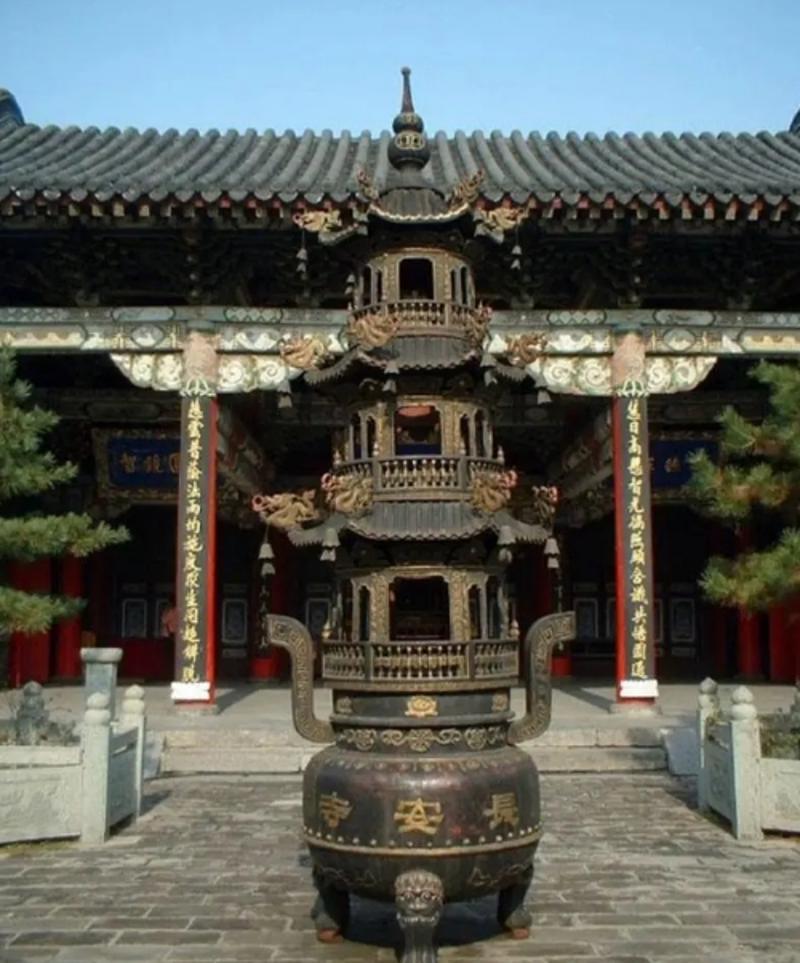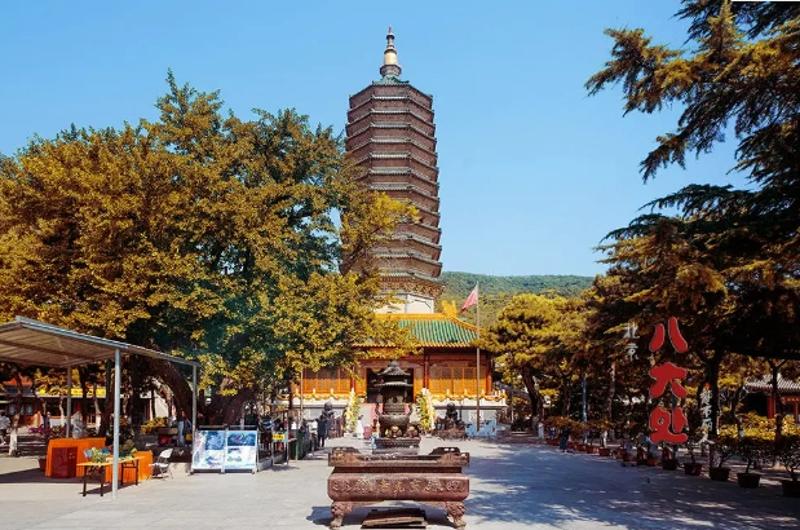Temples in Badachu Park
Badachu Park is located at the southern foothills of the Xishan Scenic Area in Beijing, renowned for its eight ancient Buddhist temples, collectively known as the "Eight Temples." These temples are precious cultural relics of the park. They are Chang'an Temple, Lingguang Temple, Sanshan An, Dabeisi, Longquan An, Xiangjie Temple, Baozhu Temple, and Zhengguo Temple. Except for Zhengguo Temple, they are all situated on Cuiwei Mountain.
These ancient Buddhist temples are invaluable cultural treasures of the park, carrying rich historical and cultural significance. Each temple has its unique historical background, architectural style, and cultural relics, providing visitors with an excellent opportunity to explore Buddhist culture and traditional Chinese architectural art.
Reference:Exploring Beijing's Badachu Park: Where History Meets Nature
1.Chang'an Temple:
Chang'an Temple, originally named Renci Temple, was built in the seventeenth year of the Ming Dynasty. As one of the oldest temples in the park, Chang'an Temple carries rich historical and cultural heritage. The architectural style of the temple incorporates traditional features of ancient Chinese temples, showcasing a profound historical background.

2. Lingguang Temple:
Lingguang Temple is one of the most important temples in Badachu Park, dating back to the Tang Dynasty. The temple houses a rare bronze statue of the Buddha, donated by the King of Thailand, as well as precious relics such as a golden Buddha tooth. Due to its magnificent architecture and valuable artifacts, the temple has become a pilgrimage site for Buddhist believers and tourists.

3. Sanshan An:
Sanshan An is nestled among the mountains of Cuiwei, Pingpo, and Laote, hence its name. The temple is adorned with numerous statues, including one of the Buddha, as well as other lifelike sculptures. Visitors can experience a serene and peaceful atmosphere here, immersing themselves in the charm of Buddhist culture.
4. Dabeisi:
Dabeisi was built during the Northern Song Dynasty and enshrines the eighteen disciples of Buddha. The temple's architecture is simple yet elegant, reflecting the unique charm of Buddhist architecture. The surrounding environment of the temple is beautiful, making it an ideal place for spiritual purification and meditation.
5. Longquan An:
Longquan An consists of five courtyards spread across three floors. The surroundings of the temple are quiet, and the summer climate is cool, making it a perfect destination for summer retreats. Visitors can appreciate the beauty of nature and the charm of Buddhist culture here.
6. Xiangjie Temple:
Xiangjie Temple is one of the largest temples in Badachu Park, favored by emperors throughout history. The grand architecture of the temple showcases the exquisite craftsmanship and grandeur of ancient Chinese architecture.
7. Baozhu Temple:
Baozhu Temple derives its name from the semi-transparent pebbles inside a cave in the temple, which sparkle like pearls. It is an excellent place for overlooking the beautiful city and witnessing sunrise, attracting many visitors.
8. Zhengguo Temple:
Zhengguo Temple is the oldest temple in Badachu Park, featuring a tree named Huanglian with an age of over 600 years. The temple also has a glacier boulder formed millions of years ago. Zhengguo Temple attracts visitors with its long history and rich natural landscapes.
These temples are all situated on Cuiwei Mountain, collectively forming the unique cultural landscape of Badachu Park. Visitors can appreciate the charm of ancient Chinese architecture and experience the profoundness of Buddhist culture here.
Q1: What are the main attractions of Badachu Park?
A1: The main attractions of Badachu Park are its eight ancient Buddhist temples, collectively known as the "Eight Temples." These temples include Chang'an Temple, Lingguang Temple, Sanshan An, Dabeisi, Longquan An, Xiangjie Temple, Baozhu Temple, and Zhengguo Temple. Each temple offers unique historical backgrounds, architectural styles, and cultural relics, providing visitors with an opportunity to explore Buddhist culture and traditional Chinese architecture.
Q2: Why are the temples in Badachu Park significant?
A2: The temples in Badachu Park are significant because they are precious cultural relics carrying rich historical and cultural significance. They represent centuries of Chinese religious and architectural heritage. These temples offer visitors a glimpse into the profoundness of Buddhist culture and provide serene environments for spiritual contemplation and relaxation amidst beautiful natural surroundings.
note: This return of all, without the author's permission, may not be reproduced